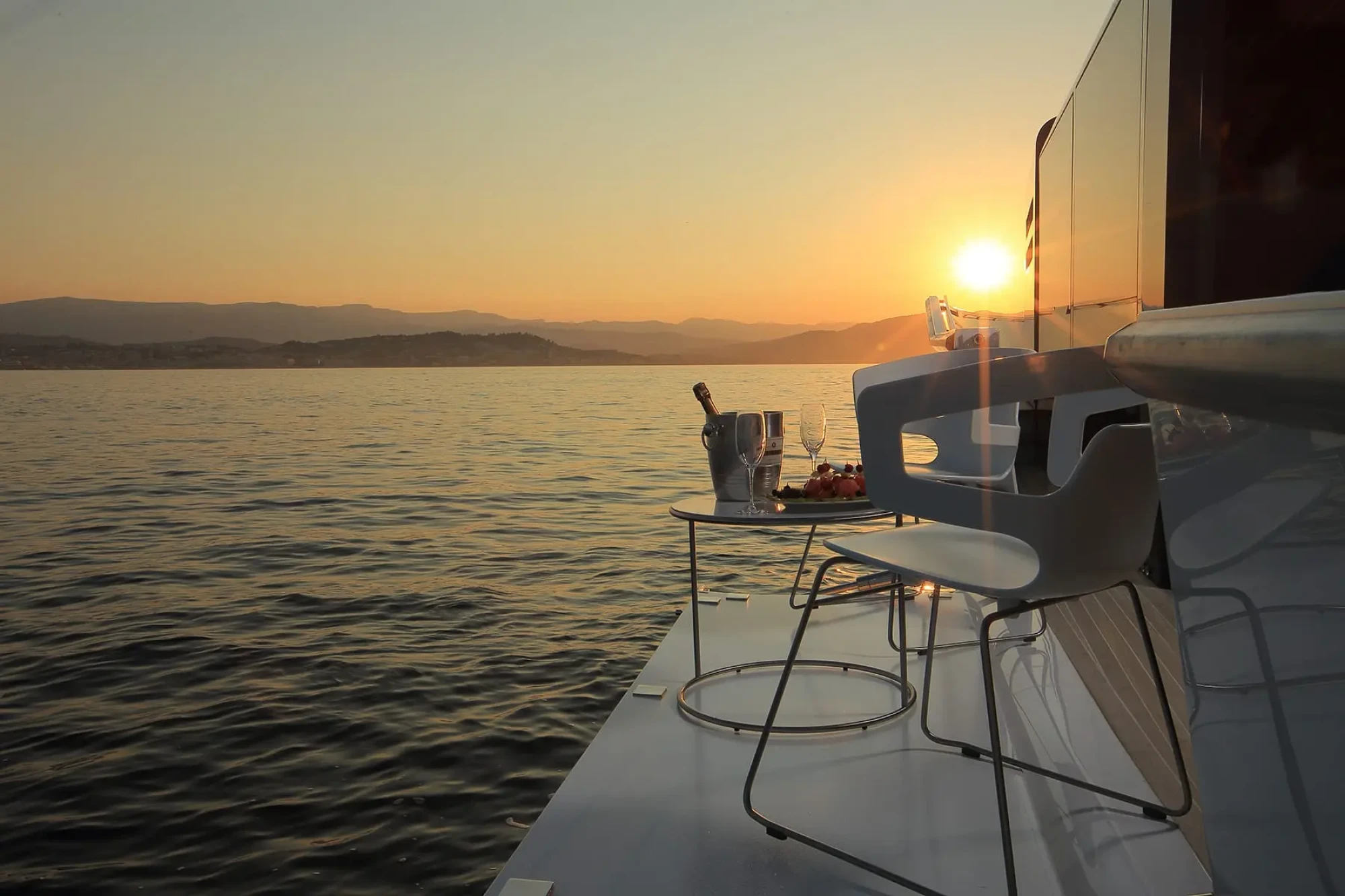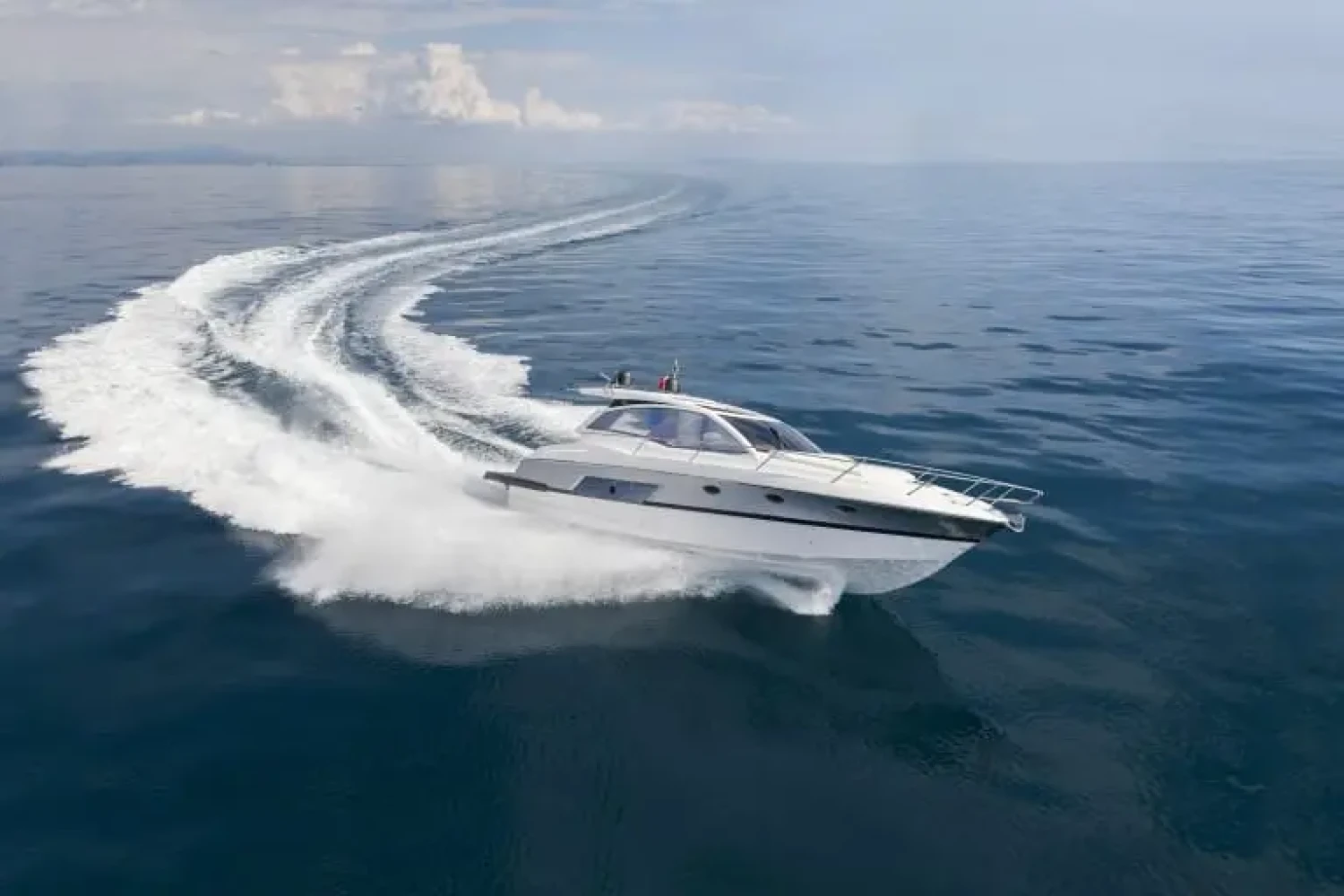
Discover how to photograph your yacht.
The Internet has changed the way the modern boat seller operates. While once, your boat might have been the only one of its kind in the yard, it is now just one option from among many and in a busy, option-rich environment like that, drawing the viewer’s interest and keeping him or her engaged requires more than just a snappy headline and some compelling keywords. It requires quality pictures that tell the story of your boat and the lifestyle it promises to provide. With a bit of care and patience, that’s actually quite easy to achieve but be warned. Your pictures are just as capable of dissuading a potential buyer as encouraging him, so before you even think of getting your camera out, it’s time to attend to a few vital chores…
Some people maintain that if you’re aiming to sell your boat at a low price or ‘in need of work’, there’s no need to attend to the prep work prior to photographing it – but in truth, size and value is not relevant. Whether your boat is worth £10,000 or £10 million, getting it seen and sold means you need to make it look its best. Firstly, it needs to be emptied entirely of your personal possessions, because when somebody looks at your images, they want to see a boat that they can imagine owning. If it exhibits the various ephemera of somebody else’s life, that keenness to imagine ceases and potential buyers move on.
It then needs to be cleaned and polished, inside and out, before being selectively ‘dressed’ with positive elements that collaborate with the viewer’s imagination. We’re talking about flowers in a vase, a coffee pot on the hob. We’re talking about a bottle of wine, some glasses on the table and perhaps a bowl of sweets or a magazine in the saloon. Beds should be made, cupboards emptied, seats straightened and cushions plumped. Steel should glitter and windows should be smear-free. It should look and feel like the buyer’s ready-made boat to such a degree that you almost feel pangs of regret that you’re about to sell it. When you reach that stage, it’s time to get your pictures.

Boating magazines and websites are actively engaged in selling a lifestyle – and when you’re attempting to sell your boat, you are too. So you need to go well beyond the lazy phone snaps of your boat sitting at its berth, wrapped in bulbous fenders, tethered with lines and hooked up to cables. If you conceal various elements of the vessel behind practical clutter, then when viewed alongside ads for comparable boats, which have been photographed underway at sea, it will instantly be put at a disadvantage.
The ideal answer here is to make a habit of photographing it during your ownership years. Whenever you go out under blue skies, try to recognise that this is the lifestyle people are looking for. Running shots are particularly valuable, so if you have a tender or a drone, or a friend with a second boat, try to get a set of pictures underway; and think about what it is that makes boating so attractive. Get a shot of your boat sitting at anchor; of the aft deck set up for lunch; of the foredeck sun loungers with a chilled bottle of wine; of the flybridge with a gorgeous sea view. In all cases, what you’re trying to do is generate photographic documentation of the most enjoyable elements of yacht ownership, so when the time comes to sell, you have all the story-telling assets you need. And if you reach the selling stage and you haven’t yet done that, then taking a clean, fully prepped boat to sea on a beautiful sunny day is a great first step in getting what you need.

While external shots are very easy to achieve on a bright, sunny day, a good full-frame digital SLR with a relatively wide-angle lens will help do justice to the scale of the internal spaces; and a tripod and remote control are also great investments. The tripod enables you to keep the ISO low for optimum quality – and because everything is kept still, the shutter speed can be increased to several seconds if necessary, without incurring the soft-focus shake and blur of a handheld camera. That also takes some of the pressure off additional lighting and, if you use a remote control to operate the camera, that further reduces any movement incurred by the pressing of a button on the camera body itself.
If you don’t have the kit, the expertise or the inclination to take this on yourself, it’s a simple (and quite affordable) job to employ a photographer who specialises in marine, property or commercial brochure photography. But whoever holds the camera, it is again always best to photograph the internals while out on the open sea. Though this might seem excessive, the difference it makes to have clean, bright, uncluttered backdrops outside the windows and beyond the guardrails and gunwales, is huge. By eradicating the spurious detail of pontoons, quays, walkways, cables, neighbouring boats, cranes, buildings and passers by, you leave the viewer nothing to distract from your boat; and nothing to cast doubt over the appeal of the experience.
Buyers want detail, so they don’t have to search for answers that aren’t evident. And you want them to have detail so they don’t begin to harbour unwarranted doubt over features that are in fact present and correct. So be systematic. Shoot every living space, inside and out and do so from a couple of angles to help show how each space interacts with the next. If you can also source a layout plan of each deck from the manufacturers of the boat, all the better. It’s a great way to tie each photo together and to lend easily digestible context to the way the flow of your boat works.
While you’re shooting your boat, you should also consider video. It enables viewers to see things that still images don’t and, as a result, it makes your ad feel more honest, more detailed, more transparent and more trustworthy. It also makes you as the boat owner seem more fastidious, more available and more committed and these are all very positive and confidence-inspiring signs for the buyer. There’s no need for complex equipment or editing software. Even a simple handheld camera or smartphone enables you to put together some walk-around footage of your boat. So take your time, walk from space to space, rotate slowly to show every angle and get as much detail as you can without letting it go on for too long. One to two minutes is the optimum length for small to mid-sized boats – and larger boats should ideally be no more than four minutes.
If your boat is large, complex or valuable; or if you find yourself lacking the time, the knowledge, the equipment or the appetite to take charge of the photography, you should probably appoint a professional. A good broker such as Argo Yachting, has a professional photographer at his disposal – and in our case – in our employ! He has the knowledge and equipment to prepare a yacht to show it off at its best, as well as proven experience in how and where to present the photos and the video to leverage maximum coverage and the most valuable leads.